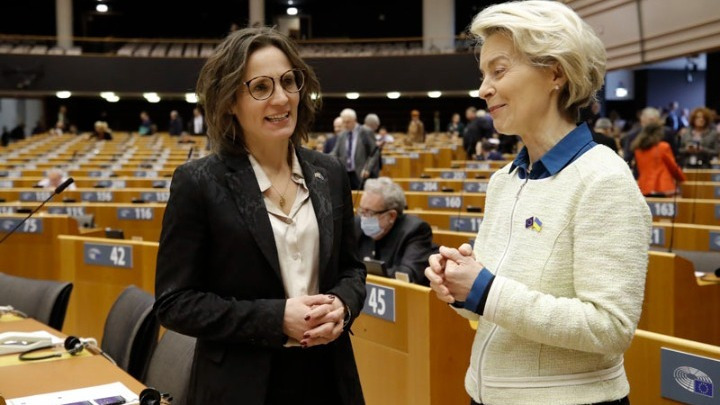Investing in nature is an opportunity that the EU can’t miss - article by Ursula von der Leyen and Jessika Roswall

In a joint article on Monday under the headline "Investing in nature is an opportunity that the EU can’t miss" - published in Greece by the Athens-Macedonian News Agency - European Commission President Ursula von der Leyen and European Commissioner for Environment, Water Resilience and a Competitive Circular Economy Jessika Roswall underlined that for business to thrive, nature must also thrive. The full article is given below:
Investing in nature is an opportunity that the EU can’t miss
by Ursula von der Leyen and Jessika Roswall
Three quarters of all businesses depend on nature, one way or another. For raw materials like timber, cotton, and crops. For ecosystem services, like the microbes and decomposers that keep farmland viable. For protection from extreme weather, like the coastlines and floodplains that shield valuable infrastructure.
This means that when nature thrives, so too does business. And when nature suffers, so too does business.
Today, we see this all too clearly. Climate risk has sent insurance premiums soaring. Floods have disrupted supply chains and damaged critical infrastructure. Declining pollinator populations have hurt agricultural production. According to research by the World Economic Forum, climate risks could cost businesses that don’t adapt up to 7% of annual earnings in the next decade - roughly the equivalent of a COVID-19 pandemic every two years.
This price is simply too high. It is time to put nature on the balance sheet. To recognise it and invest in it as the asset it is - one that pays dividends, now and later.
The European Union and its Member States have provided significant funding for nature and will continue to do so. But public investment alone is not enough. We need to create a system that incentivises the private sector to invest in nature. We need a functioning market that rewards businesses, farmers and investors for taking care of our land, sea, and sky.
Nature credits are emerging as a promising, innovative tool to change the way we value nature. At their core, they create a business opportunity to invest in nature - boosting biodiversity, preserving habitats, or creating new ones. In return, these investments generate revenue for those who work to protect nature. Farmers who diversify crops. Landowners who support wetland ecosystems. Foresters who protect threatened carbon stocks.
We know this model can work, because we have the proof. Twenty years ago, the European Union created an effective carbon market. The logic is simple. If you want to pollute, you pay. If you want to avoid the payment, you innovate. So it is an efficient, market-driven instrument that nudges the private sector towards innovation. And it worked. Over these two decades, greenhouse emissions in Europe have fallen by almost 50%, and the economy grew. The price we put on carbon raised EUR 180 billion that are now reinvested in climate projects and innovation.
As successful as this experience has been, we know that nature itself is more complex, more diverse than carbon. What do Greek olive oil and Finnish firs have in common? How does a project to support wetlands compare to reforestation? Setting up this new system will pose a series of new and challenging questions - not least of which is how to measure and quantify the impact of nature-positive action.
To make nature credits successful, we need a rigorous system of measurement, and substantive methodologies for measuring success. We need robust governance structures and fair access for local actors. We need predictability, to attract local investors. We need verification systems and true transparency, to avoid greenwashing. And we need to avoid onerous administrative burdens, to make joining in easy and attractive.
These questions are complex, but solvable. And, importantly, the momentum is on our side. Demand for nature credits is growing, in the EU and globally. The EU now supports pilot projects in France and Estonia, with more on the horizon. Some Member States have developed their own systems. And around the world, local authorities and companies are implementing new projects. According to the World Economic Forum, global demand for nature credits could reach USD 180 billion by 2050. The range of potential buyers is wide, because the prospect is attractive. As floods and droughts become more frequent, companies are looking to derisk supply chains, reduce insurance premiums, and promote nature positive actions. Financial institutions are starting to treat risks to biodiversity as a core financial risk that needs to be mitigated.
This week, the European Commission presented a roadmap on nature credits, with a view to catalyse private finance and create new sources of revenue for business. We want to develop this market step by step, bottom up, together with local communities and stakeholders. The EU - with its single market that connects 450 million people and 25 million businesses - is ideally placed to scale up these innovative markets, foster investor interest, and safeguard market integrity.
For too long, we have put a price tag on degrading nature, rather than restoring it. But with the right investments and the right incentives, we can build smarter, win-win-win solutions. Good for nature, good for businesses, and ultimately, good for people.

















































































